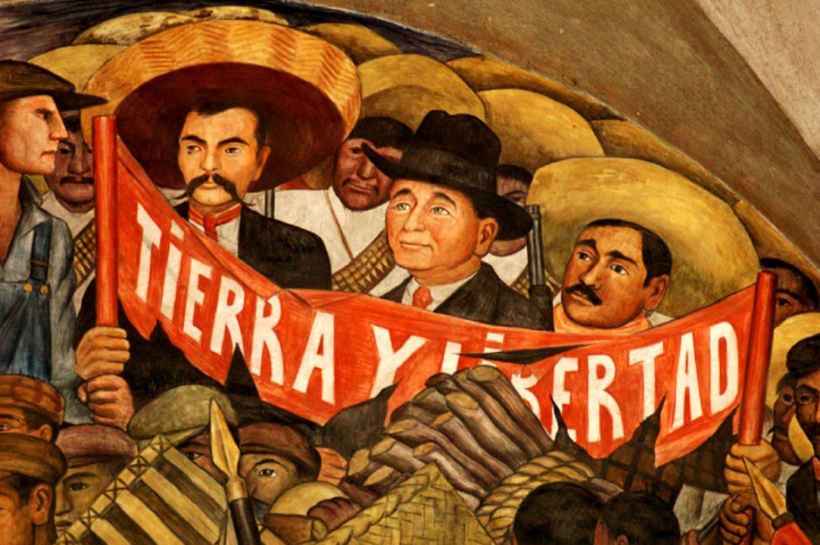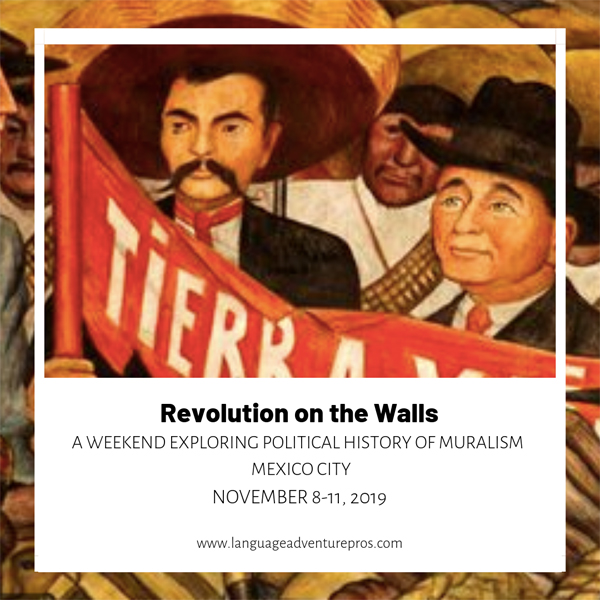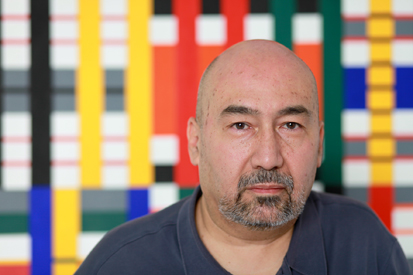by Alberto Lenz
Around the Mexican Revolution of 1910, and in the following 30 years after it, a feverish intellectual movement emerged in Mexico that sought to transform the country's arts and culture, in pursuit of a new national identity.
Possibly, the most important product of this cultural upheaval was the public art movement known as "Mexican Muralism," and nothing can be written about the Mexican muralism without mentioning José Vasconcelos, a key inspirational figure.
As the Secretary of State for Public Education during the government of General Alvaro Obregón (1921 – 1924), Vasconcelos used his political power to implement a new educational and cultural policy. During his term of office, for example, thousands of books written by famous authors were published and distributed at very low prices and an important literature program was launched for those who could scarcely read or write before the revolution.
But perhaps the most ambitious policy of Vasconcelos was that of commissioning young Mexican artists to paint murals on the walls of some important public buildings in Mexico City. In a country with a huge sector of illiterate population, the impulse that Vasconcelos gave to muralism was with the intention of visually transmitting the ideals and objectives of the Mexican Revolution.
In 1921, trying to support his program on the shoulders of an already famous painter, Vasconcelos commissioned Diego Rivera to paint a first mural in the Simón Bolívar Amphitheatre of the National Preparatory School.

When Rivera started his work in the Bolivar Amphitheatre, he was already 36 and an artist of considerable reputation. He had lived several years in Europe, mainly in Paris, participating as a central figure in the Cubist movement.
Rivera´s first mural in Mexico is called "Creation". Stylistically characterized by Italian and Byzantine influences and painted in encaustic, this mural expresses the idea of creation as the product of the dual aspects of male and female in the human being.
A year later than Rivera, in 1922, David Alfaro Siqueiros received the invitation of José Vasconcelos to join the painters who were beginning to paint murals at the National Preparatory School and "create a new civilization drawn from the very bowels of Mexico." Siqueiros was only 26 years old.
There were eight murals that Siqueiros made in a narrow and poorly lit space, the cube of the staircase of the so-called Colegio Chico of the National Preparatory School.
The most important of these murals are found in the walls and ceiling of the second floor of the staircase. The first of them is "Call to Freedom" (1923 - 24), which was left unfinished and in which Siqueiros painted two women with classic figures, barefoot and dressed in simple robes, who are breaking the chains of slavery.
A second mural of great importance is "The Burial of the Martyred Worker" (1924). In this work, also left unfinished, Siquieros represented three strong Mexican men with geometric face (making a clear reference to pre-Hispanic sculpture) who carry a coffin marked with the communist symbols of the sickle and hammer, thus representing one of the first political images of the muralist movement.

After living in extreme poverty in New York, José Clemente Orozco returned to Mexico City in 1920. At that time, he was 37 years old and largely ignored as a painter. However, Juan Tablada, an important poet, was very enthusiastic about Orozco´s talents and he brought Orozco to the attention of Vasconcelos, who also invited him to join his artistic program.
On July 1923, Orozco began "Maternity" on the ground level of the central patio of the National Preparatory School. This mural displayed the same contradictions as those murals painted earlier by Rivera and Siqueiros. Making a decision not very understandable, Orozco painted a madonna surrounded by angels, in a style that recalls both Raphael and Boticelli.
It is very strange to find that these first murals have nothing or very little to do with the ideas of the revolution and national identity. Years later, Siqueiros attributed this to the fact that, at the beginning of the mural movement, the artists were not very clear about the management of the new spaces and the themes to be addressed on the walls: "We had yet to form a concept of the difference between easel painting and the construction of murals. But the most extraordinary and fundamental problem of all concerned our theme. The problem of a new thematic concept was tremendous, new and incalculable".
But, however contradictory they are, these early murals painted by Rivera, Siqueiros and Orozco are important because some of the conceptual, thematic and technical concerns of the posterior mural movement were defined from them.
******

To learn about these first works of muralism in Mexico City, and then to see the more mature and strong works of this three great masters in the Palacio Nacional and the Palacio de Bellas Artes (such as the magnificent "Man at the Crossroads" by Rivera) is the main objective of the guided tour "Revolution on the Walls" that Language Adventure Pros is organizing for this November.
Guided by Ginger Bandoni and Alberto Lenz, we will be immersed in the search of a new art for a new society of the Mexican post-revolutionary era, visiting the places of Mexico City´s historical downtown where Vasconcelos, Rivera, Siqueiros and Orozco forged the foundations of a movement that transformed Mexican art and impacted the world.
Information about the tour is available at:
www.languageadventurepros.com
**************

Alberto Lenz is an artist living in San Miguel de Allende dedicated to sculpture, painting and architecture. Recently, he is also working on the design of jewelry and textiles, under his XIDO-Estudio brand. He is also promoting the project of the CREATIVE HUB of San Miguel, to develop the creative industries in the city.
You must register and log in to write a comment.
Please use the "login" link at the top (right) of the page.